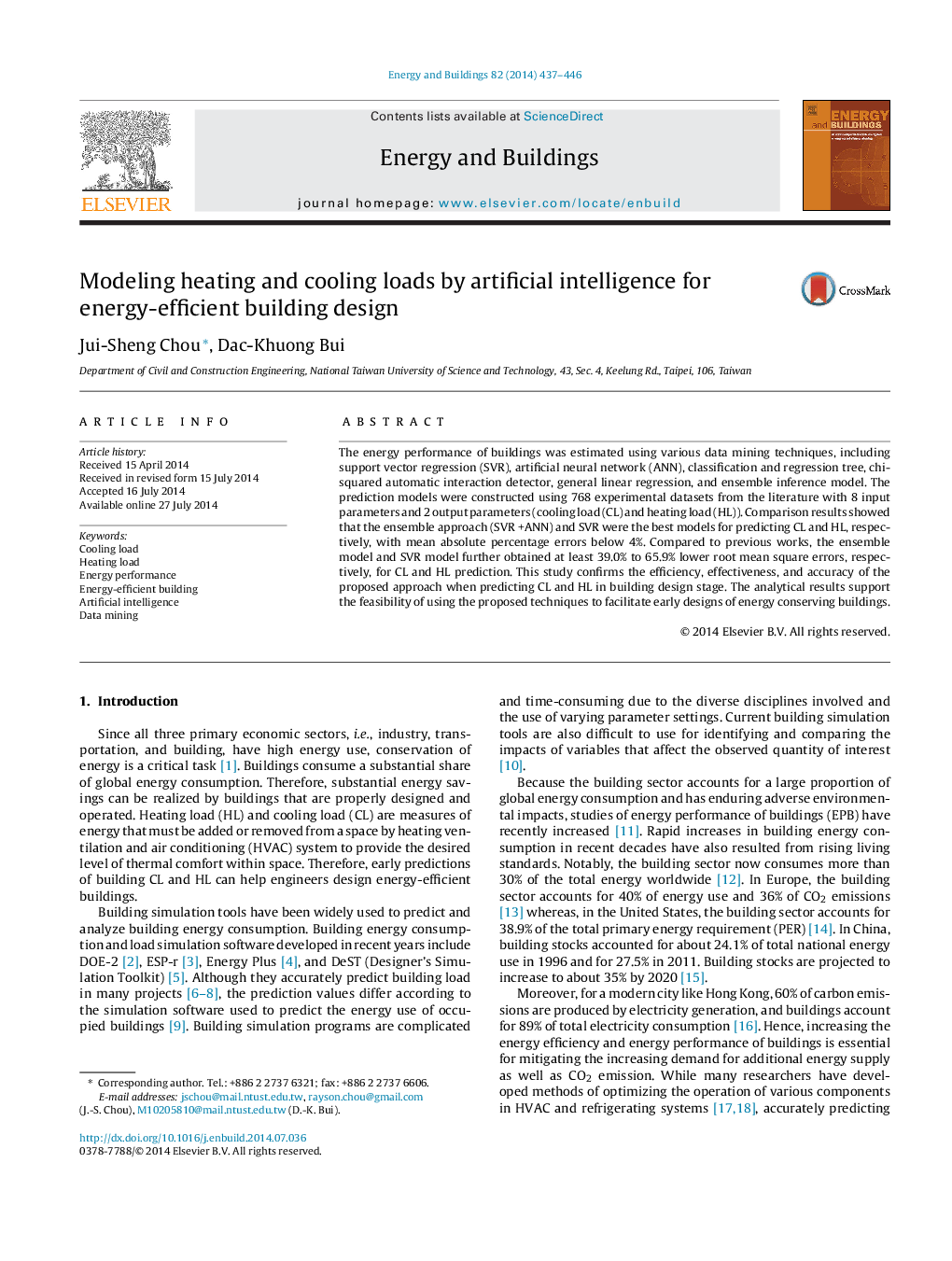| Article ID | Journal | Published Year | Pages | File Type |
|---|---|---|---|---|
| 262685 | Energy and Buildings | 2014 | 10 Pages |
•Early prediction of building cooling load (CL) and heating load (HL) can help engineers design energy-efficient buildings.•Single and ensemble models are proposed to predict CL and HL.•Comparisons shows that the proposed approach has superior prediction accuracy, reliability, and ease of use.•This study demonstrates an effective tool for designing and analyzing energy efficient buildings.
The energy performance of buildings was estimated using various data mining techniques, including support vector regression (SVR), artificial neural network (ANN), classification and regression tree, chi-squared automatic interaction detector, general linear regression, and ensemble inference model. The prediction models were constructed using 768 experimental datasets from the literature with 8 input parameters and 2 output parameters (cooling load (CL) and heating load (HL)). Comparison results showed that the ensemble approach (SVR +ANN) and SVR were the best models for predicting CL and HL, respectively, with mean absolute percentage errors below 4%. Compared to previous works, the ensemble model and SVR model further obtained at least 39.0% to 65.9% lower root mean square errors, respectively, for CL and HL prediction. This study confirms the efficiency, effectiveness, and accuracy of the proposed approach when predicting CL and HL in building design stage. The analytical results support the feasibility of using the proposed techniques to facilitate early designs of energy conserving buildings.
